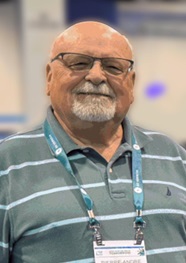Introduction to High Voltage Gas Insulated Switchgear and its Applications
A gas-insulated substation (GIS) uses a superior dielectric gas, SF6, at moderate pressure for phase-to phase and phase-to-ground insulation. The high voltage conductors, circuit breaker interrupters, switches, current transformers, and voltage transformers are in SF6 gas inside grounded metal enclosures.The atmospheric air insulation used in a conventional, air-insulated substation (AIS) requires meters of air insulation to do what SF6 can do in centimeters.
GIS can therefore be smaller than AIS by up to a factor of 10. A GIS is mostly used where space is expensive or not available. In a GIS the active parts are protected from the deterioration from exposure to atmospheric air, moisture, contamination, etc.
As a result, GIS is more reliable and requires less maintenance than AIS.
GIS was first developed in various countries between 1968 and 1972. After about 5 years of experience, the use rate increased to about 20% of new substations in countries where space is limited. In other countries with space easily available, the higher cost of GIS relative to AIS has limited use to special cases.
In this Technical presentation, We will discuss more about GE Vernova HV GIS technology, major components and its application.
Date and Time
Location
Hosts
Registration
-
 Add Event to Calendar
Add Event to Calendar
Loading virtual attendance info...
Speakers
Pierre
Introduction to High Voltage Gas Insulated Switchgear and its Applications
A gas-insulated substation (GIS) uses a superior dielectric gas, SF6, at moderate pressure for phase-to phase and phase-to-ground insulation. The high voltage conductors, circuit breaker interrupters, switches, current transformers, and voltage transformers are in SF6 gas inside grounded metal enclosures.
The atmospheric air insulation used in a conventional, air-insulated substation (AIS) requires meters of air insulation to do what SF6 can do in centimeters.
GIS can therefore be smaller than AIS by up to a factor of 10. A GIS is mostly used where space is expensive or not available. In a GIS the active parts are protected from the deterioration from exposure to atmospheric air, moisture, contamination, etc.
As a result, GIS is more reliable and requires less maintenance than AIS.
GIS was first developed in various countries between 1968 and 1972. After about 5 years of experience, the use rate increased to about 20% of new substations in countries where space is limited. In other countries with space easily available, the higher cost of GIS relative to AIS has limited use to special cases.
In this technical Presentation, We will discuss more about GE Vernova HV GIS technology, major components and its application.
Biography:

Email:
Address:United States
Agenda
7:00PM - Introduction of IEEE Hamilton Section
7:15PM - Presentation
8:15PM - Q&A
8:30PM - Presentation End

